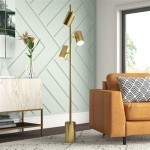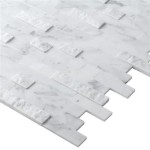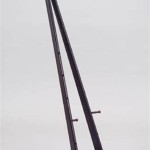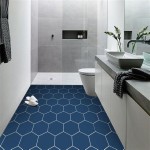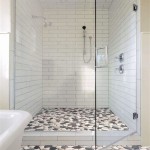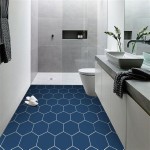What Is the Best Rug Pad for Hardwood Floors?
Hardwood floors are a desirable feature in many homes, providing a classic aesthetic and potential for increased property value. Protecting this investment is paramount, and one crucial element in maintaining hardwood floor integrity is the selection of an appropriate rug pad. A rug pad serves multiple purposes, including preventing slippage, adding cushioning, and, most importantly, protecting the floor surface from scratches, dents, and discoloration. Choosing the "best" rug pad depends on several factors, including the type of hardwood floor, the type of rug, and the specific needs and preferences of the homeowner.
The market offers a diverse range of rug pads, each with distinct materials, thicknesses, and construction methods. Understanding the characteristics of these options is essential for making an informed decision. Factors such as material composition, density, and grip strength all contribute to the effectiveness of a rug pad in protecting hardwood floors. Incorrect selection can lead to unintended consequences, such as trapped moisture, chemical reactions, or even damage to the floor's finish.
Key Considerations When Choosing a Rug Pad
Several key aspects must be considered when selecting a rug pad for hardwood floors to ensure both floor protection and rug longevity. These considerations encompass material, thickness, grip, and overall suitability for the specific environment and rug type.
Material: The material of the rug pad is arguably the most critical factor. Common materials include natural rubber, memory foam, felt, and synthetic materials like PVC (polyvinyl chloride). Natural rubber, particularly non-slip rubber pads, are often preferred for their excellent grip and eco-friendliness, provided they are sourced responsibly and do not contain synthetic additives that can react with certain floor finishes. Felt pads, often made from recycled fibers, provide cushioning and sound absorption but typically require a non-slip backing to prevent movement. Memory foam pads offer significant comfort underfoot but may not be the best choice for thinner rugs or high-traffic areas. PVC pads are generally less expensive but can potentially off-gas harmful chemicals and may not be suitable for all hardwood floor finishes. It is crucial to research the specific material composition and certifications to ensure it is safe for use on hardwood floors.
Thickness: The thickness of the rug pad influences both comfort and floor protection. Thicker pads offer more cushioning and can help to better absorb impact, protecting the floor from dents and scratches. However, excessively thick pads can create a tripping hazard, particularly if the rug is placed near doorways or in high-traffic areas. Furthermore, very thick pads under lightweight rugs can cause the rug to buckle or wrinkle. A general guideline is to choose a pad thickness that complements the rug's thickness and the overall aesthetic. For thinner rugs, a thicker pad might be desirable for added comfort. For thicker rugs, a thinner pad may be sufficient to provide grip and floor protection without creating excessive height. As a general rule, rug pads range from 1/8 inch to ½ inch in thickness.
Grip: A rug pad's grip is essential for preventing the rug from slipping and sliding, which can lead to both safety hazards and floor damage. Non-slip rug pads are designed with textured surfaces or coatings that create friction between the rug and the floor. The type of grip material used can vary, with options including waffle patterns, ribbed surfaces, or specialized coatings. It is important to choose a rug pad with a grip that is appropriate for the specific type of hardwood floor and rug. For example, some grip materials may be too abrasive for delicate floor finishes, while others may not provide sufficient grip for heavy rugs on smooth surfaces. Test the grip in an inconspicuous area before placing the rug pad under the entire rug.
Types of Rug Pads and Their Suitability for Hardwood Floors
Different types of rug pads cater to specific needs and offer varying levels of performance on hardwood floors. Understanding the characteristics of each type is crucial for matching the right pad with the appropriate rug and floor.
Natural Rubber Rug Pads: As previously mentioned, natural rubber rug pads are a popular choice due to their excellent grip and eco-friendliness. These pads are typically made from sustainably sourced rubber and do not contain harmful chemicals or adhesives. They are effective at preventing rugs from slipping and sliding on hardwood floors, and they provide a degree of cushioning. Natural rubber pads are generally durable and long-lasting. However, it's crucial to verify that the rubber is truly natural and free of synthetic additives. It is also important to select a pad with a textured surface or pattern that provides sufficient grip without being overly abrasive.
Felt Rug Pads: Felt rug pads offer primarily cushioning and sound absorption. They are often made from recycled materials, making them an environmentally friendly option. However, felt pads by themselves typically lack sufficient grip to prevent rugs from slipping on hardwood floors. For this reason, felt pads are often combined with a non-slip backing, such as rubber or latex, to provide both cushioning and grip. These combination pads can be a good choice for adding comfort and protecting the floor from scratches, but it is important to ensure that the non-slip backing is compatible with the specific hardwood floor finish.
Memory Foam Rug Pads: Memory foam rug pads provide excellent cushioning and comfort underfoot. They are particularly well-suited for areas where added comfort is desired, such as living rooms and bedrooms. However, memory foam pads may not be the best choice for high-traffic areas or under heavy rugs, as they can compress over time and lose their cushioning. Furthermore, memory foam pads often lack sufficient grip and may require a non-slip backing to prevent the rug from slipping on hardwood floors. When selecting a memory foam rug pad, consider the density of the foam and ensure that it is appropriately sized for the rug.
PVC Rug Pads: PVC rug pads are generally the least expensive option, but they also come with potential drawbacks. PVC can off-gas harmful chemicals, which can be a concern for people with allergies or sensitivities. Furthermore, PVC pads may not be as durable as other types of rug pads, and they can sometimes leave residue on hardwood floors. If considering a PVC rug pad, it is crucial to choose one that is certified as low-VOC (volatile organic compound) and to test it in an inconspicuous area before placing it under the entire rug. Given the potential risks, it is generally recommended to choose a different type of rug pad for hardwood floors.
Proper Installation and Maintenance of Rug Pads
Even the best rug pad will not perform effectively if it is not properly installed and maintained. Correct installation ensures that the pad provides optimal grip and protection, while regular maintenance helps to prolong its lifespan and prevent potential issues.
Proper Sizing: The rug pad should be slightly smaller than the rug itself, typically around 1-2 inches smaller on all sides. This allows the rug to lie flat and prevents the pad from being visible around the edges. Excess pad material can create a tripping hazard and detract from the rug's appearance. Accurate measurements are essential for ensuring proper sizing. If necessary, the rug pad can be trimmed to fit using scissors or a utility knife. Take care to cut the pad evenly and avoid damaging the rug during the trimming process.
Cleaning and Maintenance: Regular cleaning of the rug pad is essential for maintaining its performance and preventing the buildup of dirt and debris. The frequency of cleaning will depend on the amount of traffic and the type of rug pad material. Most rug pads can be vacuumed regularly to remove surface dirt and dust. For deeper cleaning, the rug pad can be spot cleaned with a mild detergent and water. Avoid using harsh chemicals or abrasive cleaners, as these can damage the pad material. Allow the rug pad to air dry completely before placing it back under the rug. If the rug pad becomes excessively soiled or damaged, it may be necessary to replace it.
Ventilation: Adequate ventilation is essential for preventing moisture buildup between the rug pad and the hardwood floor. Trapped moisture can lead to mold growth and damage the floor finish. Ensure that the rug and pad are allowed to air out periodically, especially in humid environments. Consider using a breathable rug pad material, such as natural rubber or felt, to promote air circulation. Avoid placing rugs and pads in areas with excessive moisture, such as bathrooms or laundry rooms.
Ultimately, the "best" rug pad for hardwood floors is the one that best meets the specific needs and circumstances of the homeowner. Careful consideration of material, thickness, grip, and proper installation and maintenance will help to ensure that the chosen rug pad effectively protects the hardwood floor and enhances the overall comfort and aesthetic of the space. Consulting with flooring professionals or rug retailers can provide valuable insights and recommendations based on individual requirements. Choosing the right rug pad is an investment in the longevity and beauty of the hardwood floors.

What Type Of Non Slip Rug Pad Is Best For Hardwood Floors Rugpad

Non Slip Rug Pad Options For Hardwood Flooring And More

The Best Rug Pads Reviews By Wirecutter

Non Slip Rug Pad Options For Hardwood Flooring And More

How To Choose A Rug Pad For Hardwood Floor Yorkshire Bedding

The Best Rug Pads Reviews By Wirecutter

The Best Rug Pads Reviews By Wirecutter

Rug Pads For Hardwood Floors Rugpadusa

Nourison Anchor Loc 9 Ft X 12 Non Slip Dual Surface Rug Pad 419842

The Best Rug Pads Reviews By Wirecutter
